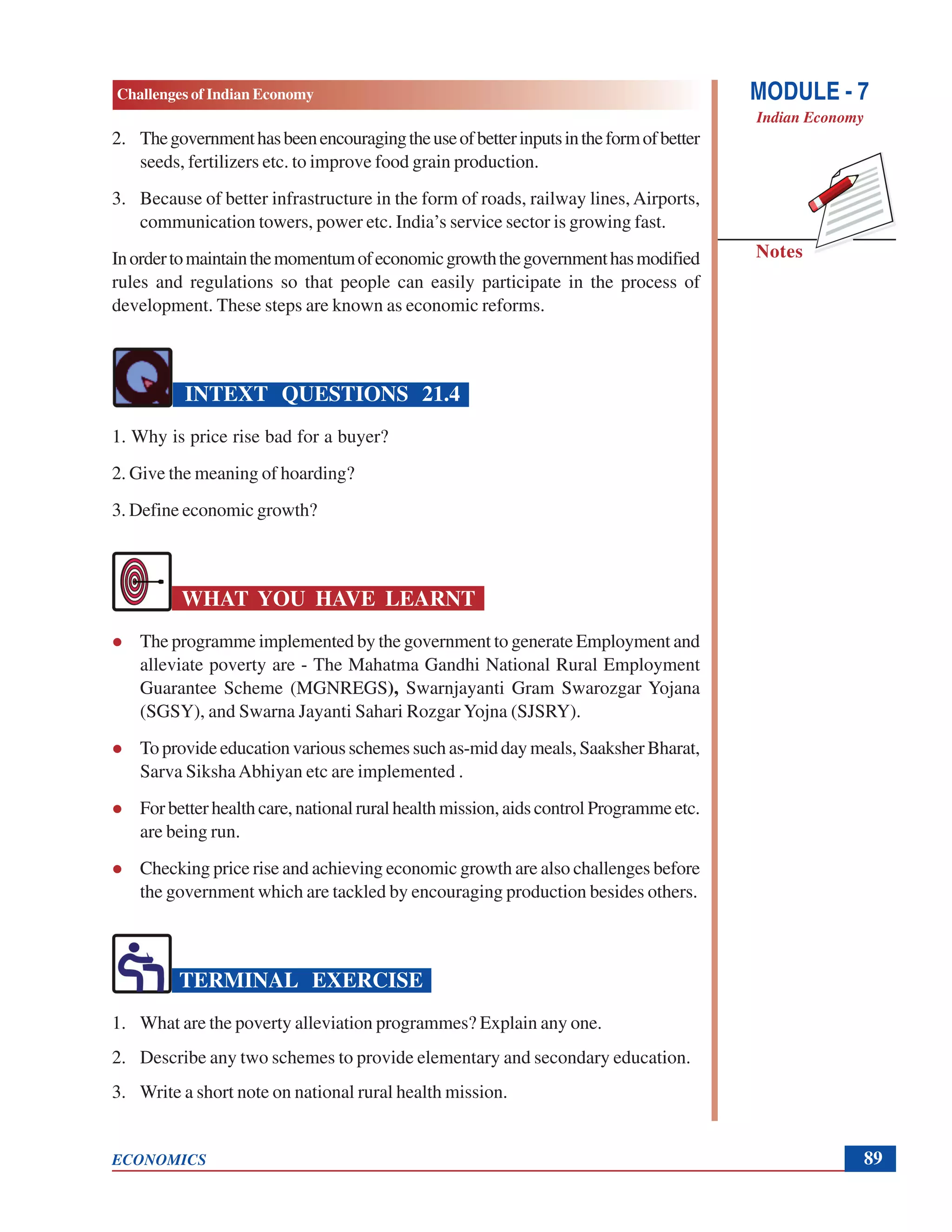The document discusses several major challenges facing the Indian economy:
1) Poverty and unemployment are major issues as a large portion of the population cannot afford basic needs or find adequate work.
2) Providing education and healthcare to all citizens is challenging given India's large population.
3) Rising inflation hits the poor and middle classes hard so controlling prices is another key problem.
4) Achieving sustained economic growth each year to raise incomes as the population and demands grow is a further challenge.









